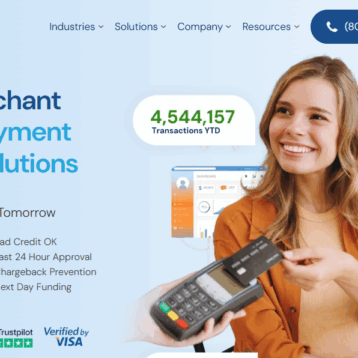Let’s talk about one thing every business owner agrees on: price matters.
Winning the pricing war is not just about having the right product but the right price. Statistics reveal that 81% of shoppers research online before buying. Hence, comparing prices across platforms is the new normal. If your pricing strategy isn’t sharp, you can lose a lot of potential customers.
Therefore, Price Intelligence is super important in the tech-savvy customers era. In this blog, we’ll break down what is price intelligence and how it works, why it’s critical in today’s market, and how businesses across industries are using it to stay competitive and profitable.
From increasing sales to outsmarting competitors, you’ll see why price intelligence isn’t just a tool but a necessity.
By the end, you’ll have a clear understanding of how price intelligence can give your business the upper hand in a market that’s constantly evolving.
Ready to find your competitive edge? Let’s dive in!
What is Price Intelligence?

Price intelligence is all about using data to make smarter pricing decisions. It involves collecting information on competitor prices, market trends, and customer behavior, and then analyzing it to find patterns and opportunities. The goal? To stay competitive without sacrificing profitability.
Here’s how it works: businesses gather data from sources like competitor websites, APIs, and market reports. This raw data is processed to uncover trends—such as pricing fluctuations, seasonal demand shifts, and customer preferences. These insights help businesses adjust prices strategically, whether it’s lowering them to match a competitor or increasing them to capitalize on high demand.
One of the biggest benefits of price intelligence is real-time adaptability. Markets move fast, and pricing decisions that take days to make can leave you behind. Dynamic adjustments ensure you stay relevant, attract customers, and maintain a competitive edge in your market.
The Strategic Benefits of Price Intelligence
Price intelligence offers businesses a competitive edge by empowering smarter pricing decisions and deeper market understanding. Let’s break down how it works and why it matters.
Improve Pricing Decisions
With price intelligence, businesses can set prices that balance profitability with competitiveness. Instead of guessing or reacting too late, they have data-driven insights to optimize prices for maximum impact. This ensures they attract customers while protecting their margins.
Understand Market Trends
Markets shift fast, and staying ahead is crucial. Price intelligence allows businesses to predict seasonal demand, identify opportunities, and adapt before their competitors do. For example, when a competitor slashes prices during a holiday sale, businesses equipped with real-time insights can respond strategically rather than reactively.
Customer Insights
Every customer has a different threshold for how much they’re willing to pay. Price intelligence helps businesses gauge price elasticity—essentially, what people are willing to spend—and segment audiences accordingly. For instance, luxury shoppers and bargain hunters require distinct pricing strategies, and price intelligence ensures both are served effectively.
Use Cases of Price Intelligence Across Different Industries
Price intelligence goes beyond simply tracking competitors’ prices—it’s about turning that data into actionable strategies that boost revenue and attract customers. Let’s look at how different industries are making this happen, with practical examples to illustrate the impact.
E-Commerce:
In the hyper-competitive world of e-commerce, pricing is everything. Price monitoring tools help businesses keep a close eye on competitors, analyzing real-time data to stay ahead.
Example: Imagine a retailer selling wireless headphones. Suppose a competitor on Amazon drops their price by 10% during a weekend sale. You have applied some method to scrape Amazon price & track it at regular intervals will be notified immediately about this & can adjust the pricing. On the flip side, for trending items like a new product launch, the retailer might increase prices slightly to maximize margins. The result? They stay competitive while protecting profitability.
Food and Beverage:
Seasonality and consumer trends have a huge impact on the food and beverage industry, and price intelligence ensures businesses make the right moves at the right time.
Example: A coffee chain notices a spike in iced coffee sales every summer. Using price intelligence, they analyze competitor pricing and customer demand. They might introduce limited-time offers during peak heatwaves or raise prices slightly during periods of high demand. Similarly, a restaurant could adjust menu pricing based on seasonal trends, such as offering higher prices for holiday-themed dishes that attract more diners.
Fashion Retail:
Fashion retail is driven by trends, and getting pricing right is crucial to selling the latest styles and clearing outdated stock.
Example: During the holiday shopping season, a clothing retailer uses price intelligence to track competitor discounts on winter coats. If a competitor drops prices by 15%, the retailer can respond by matching the price or bundling coats with complementary accessories like scarves. For off-season inventory, price intelligence helps identify slow-moving products, enabling the retailer to create flash sales or discounts to clear space for new arrivals.
Travel Industry:
The travel industry is built on dynamic pricing, and price intelligence is a cornerstone of profitability.
- Hotel Rate Intelligence: Hotels, travel agencies, and travel businesses can use a Hotel Price API to monitor competitors’ room rates across all major OTAs. If nearby hotels lower prices during a slow week, the hotel can adjust its rates to remain competitive. Conversely, during peak tourist seasons, the hotel can increase prices, knowing competitors are likely to do the same.
- Flight Price Intelligence: Airlines rely on price intelligence to analyze airfare trends and make real-time adjustments. For instance, if a competitor reduces fares on a popular route, an airline can respond by offering promotions or bundling perks like free baggage. During peak travel times like holidays, price intelligence ensures that tickets are priced to maximize revenue while still filling seats. Tools like Flight Price API make it easier for airlines to gather and use this data effectively.
The Benefits of Price Intelligence
No matter the industry, price intelligence offers undeniable advantages that help businesses stay competitive, profitable, and agile. Let’s break it down:
- Competitive Pricing: In today’s fast-moving markets, being reactive isn’t enough—you need to be proactive. Price intelligence gives businesses the tools to monitor competitors in real-time, allowing them to adjust pricing before losing customers to better deals elsewhere. Whether it’s matching a competitor’s discount or capitalizing on market demand, it keeps you a step ahead.
- Maximized Revenue: Knowing when to adjust prices is everything. During high-demand periods—like holiday seasons or product launches—businesses can use price intelligence to raise prices strategically without losing sales. On the flip side, it helps identify slow-moving stock and prompts timely discounts to clear inventory, turning potential losses into gains.
- Real-Time Decisions: Markets don’t wait, and neither should your pricing strategy. With price intelligence, businesses can make instant adjustments based on live data. Whether it’s responding to a competitor’s flash sale or tweaking prices during a sudden demand surge, real-time insights ensure every pricing decision aligns with current market conditions.
Price intelligence isn’t just about numbers but about using them to stay relevant and profitable in a competitive landscape.
Challenges in Implementing Price Intelligence
While price intelligence is a powerful tool, implementing it effectively comes with its own set of challenges. Here’s what businesses need to tackle:
1. Data Complexity
Price intelligence relies on accurate, comprehensive data, but gathering it is no easy task. With multiple competitors, platforms, and marketplaces, businesses often face issues like outdated information, inconsistent pricing formats, and gaps in data. Ensuring the information is clean, up-to-date, and usable requires advanced tools and processes. Without it, insights can be skewed, leading to poor pricing decisions.
2. Employee Training
Data is only as good as the people interpreting it. Teams need to understand how to analyze insights and use them effectively to make pricing decisions. This often means training employees to read market trends, understand competitor strategies, and act on real-time data. Without proper training, businesses risk misinterpreting valuable information, leaving opportunities on the table.
3. Real-Time Adjustments
Markets move fast—sometimes faster than businesses can react. Staying agile and responding quickly to competitor price changes or market shifts is crucial. However, delays in decision-making or outdated tools can make real-time adjustments difficult, giving competitors an advantage. Businesses need reliable systems that allow them to adapt pricing instantly without bottlenecks.
4. Mitigating Overdependence on Automation
While algorithms and automation are essential in price intelligence, relying solely on them can backfire. Algorithms may not capture nuances like consumer sentiment, seasonal behaviors, or unexpected market shifts. A human touch is necessary to interpret data contextually and make judgment calls that algorithms might miss. The key is to strike a balance between data-driven automation and human oversight.
By addressing these challenges head-on, businesses can unlock the full potential of price intelligence and stay ahead in competitive markets.
The Future of Price Intelligence
The future of price intelligence is all about smarter technology, new possibilities, and a deeper connection with customers. Let’s take a look at where it’s headed:
AI and Machine Learning Integration
Artificial intelligence and machine learning are transforming price intelligence into a predictive powerhouse. Instead of just reacting to market changes, businesses will soon forecast pricing trends with unparalleled accuracy. For example, AI can analyze vast amounts of historical data to predict when competitors might lower prices or when demand for specific products will surge. This means businesses can stay ahead of the curve, optimizing pricing strategies before their competitors even notice the shift.
Expansion into New Markets
Price intelligence is moving beyond traditional industries and making its mark in emerging sectors like renewable energy and healthcare. In renewable energy, for instance, dynamic pricing could adjust rates based on energy demand or supply fluctuations. Meanwhile, in healthcare, price intelligence can help organizations create transparent pricing models for treatments or medications, ensuring both accessibility and profitability.
Personalization through Data Analytics
Customers are expecting more personalized experiences, and pricing is no exception. With advanced analytics, businesses can create individualized pricing strategies based on customer preferences, purchase history, and willingness to pay. For example, a subscription service could offer discounts to loyal customers or personalized bundles that align with their past behavior. This level of customization not only boosts sales but also builds stronger customer relationships.
Conclusion
Price intelligence is more than a strategy—it’s the competitive edge businesses need in this tech-savvy buyers era. By leveraging data to make smarter pricing decisions, companies can stay ahead of rivals, boost revenue, and strengthen customer relationships.
In a fast-paced marketplace, adaptability and informed decision-making are essential. By understanding market trends, reacting in real time, and personalizing pricing strategies, businesses can navigate challenges and seize opportunities effectively.
Now is the time to embrace price intelligence. Use it to make smarter moves, connect with customers, and thrive in an increasingly competitive world. The future of your business depends on it!










